
Digital Marketing Blogs
"Let's Learn, Explore, and Connect to the World"

YouTube Analytics & Audience Insights: Understanding Viewer Demographics and Engagement Patterns
- Jenelie Hijosa
- Digital Marketing (Digital Business)

Introduction
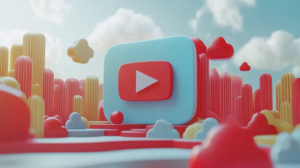
YouTube has evolved into a critical platform for digital marketing, offering brands and content creators unparalleled access to a global audience. With over two billion monthly active users, understanding who watches your content and how they engage with it is crucial for driving growth and maximizing impact. By leveraging YouTube Analytics, marketers can gain deep insights into viewer demographics and engagement patterns, enabling them to tailor their content strategy for optimal results.
In this blog, we’ll explore the essentials of YouTube Analytics, from accessing and interpreting key metrics to understanding viewer demographics and engagement patterns. We’ll explore how these insights can shape your content strategy, boosting your ability to engage with your audience and meet your marketing objectives.
Understanding YouTube Analytics
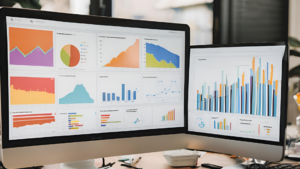 YouTube Analytics is a robust resource that offers detailed information about the performance of your channel. This tool helps creators understand how their content is performing, who their viewers are, and how they can optimize their strategy to achieve better results.
YouTube Analytics is a robust resource that offers detailed information about the performance of your channel. This tool helps creators understand how their content is performing, who their viewers are, and how they can optimize their strategy to achieve better results.
Overview of YouTube Analytics Tool
 YouTube Analytics provides an abundance of data to help you make well-informed decisions about your content. It includes metrics on views, watch time, audience retention, demographics, engagement, and more. This information is essential for identifying what is effective and what is not, enabling you to modify your strategy accordingly.
YouTube Analytics provides an abundance of data to help you make well-informed decisions about your content. It includes metrics on views, watch time, audience retention, demographics, engagement, and more. This information is essential for identifying what is effective and what is not, enabling you to modify your strategy accordingly.
Key Metrics to Monitor
1. Views: The total number of times your video has been watched. This is a basic metric that indicates the popularity of your content.
2. Watch Time: The overall duration that viewers have spent watching your videos. Increased watch time indicates that your content is captivating and maintains the audience’s interest.
3. Audience Retention: This shows how well your video is retaining viewers over its duration. It can highlight which parts of your video are most engaging or where viewers tend to drop off.
4. Engagement Metrics: These include likes, comments, shares, and subscribes, which indicate how viewers are interacting with your content.
5. Demographics: Information about your viewers’ age, gender, location, and device type.
How to Access and Navigate YouTube Analytics
To access YouTube Analytics, follow these steps:
1. Log in to YouTube Studio: This is the control center for your YouTube channel.
2. Navigate to the Analytics Section: On the left-hand menu, click on “Analytics.” This will open the main analytics dashboard.
3. Explore Different Tabs: The dashboard is divided into several tabs such as Overview, Reach, Engagement, Audience, and Revenue. Each tab provides different sets of data.
4. Customize Your View: Use filters and date ranges to drill down into specific metrics or time periods that are relevant to your analysis.
Practical Examples of Data Utilization
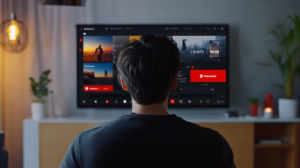 Consider a YouTuber who notices a drop in audience retention at a particular point in their videos. By examining the content at that timestamp, they might discover that viewers are losing interest during lengthy intros. Adjusting the video structure to have shorter intros and more engaging content at the beginning can improve retention rates.
Consider a YouTuber who notices a drop in audience retention at a particular point in their videos. By examining the content at that timestamp, they might discover that viewers are losing interest during lengthy intros. Adjusting the video structure to have shorter intros and more engaging content at the beginning can improve retention rates.
Another example is using the engagement metrics to understand which types of videos garner the most comments and likes. This feedback loop can help in creating more of the content that resonates with viewers, thereby increasing overall channel performance.
Analyzing Viewer Demographics
 Grasping the demographics of your audience is essential for customizing your content and marketing initiatives. Demographics offer insights into the identity of your viewers, guiding everything from content development to advertising strategies.
Grasping the demographics of your audience is essential for customizing your content and marketing initiatives. Demographics offer insights into the identity of your viewers, guiding everything from content development to advertising strategies.
Importance of Demographics in Digital Marketing
 Demographic data helps marketers identify and understand their target audience. By knowing the age, gender, location, and device preferences of your viewers, you can create content that resonates with them and meets their needs. This focused approach will lead to higher engagement, greater loyalty, and improved overall performance.
Demographic data helps marketers identify and understand their target audience. By knowing the age, gender, location, and device preferences of your viewers, you can create content that resonates with them and meets their needs. This focused approach will lead to higher engagement, greater loyalty, and improved overall performance.
Key Demographic Metrics in YouTube Analytics
1. Age: Knowing the age range of your viewers can help you create age-appropriate content and choose the right tone and messaging.
2. Gender: To know the gender breakdown of your audience can guide the themes and subjects you choose to address.
3. Geography: Location data is essential for tailoring content to cultural and regional preferences, as well as optimizing ad targeting.
4. Device Type: Knowing whether viewers are watching on mobile, desktop, or other devices can influence how you format and present your videos.
Steps to Access Demographic Data
1. Go to the Audience Tab: Upon seeing the YouTube Analytics, navigate to the “Audience” tab.
2. Review Demographic Information: Here, you will find detailed breakdowns of your viewers’ age, gender, location, and device type.
3. Analyze Trends: Observe the patterns or we alos call it as trends in your demographic data. For example, you might notice that a particular age group is more engaged with certain types of content.
In-Depth Analysis of Demographic Data
 When analyzing demographic data, it’s important to look beyond the surface numbers. For instance, if your primary audience is aged 18-24, consider the sub-interests and behaviors typical of this age group. Younger audiences may prefer faster-paced, visually dynamic content, whereas older viewers might appreciate more detailed, informative videos.
When analyzing demographic data, it’s important to look beyond the surface numbers. For instance, if your primary audience is aged 18-24, consider the sub-interests and behaviors typical of this age group. Younger audiences may prefer faster-paced, visually dynamic content, whereas older viewers might appreciate more detailed, informative videos.
Case Study: How Demographics Can Influence Content Strategy

Consider a beauty YouTuber who discovers through analytics that the majority of her audience is women aged 18-24 from the United States, primarily watching on mobile devices. With this information, she can tailor her content to focus on trends and products popular among young American women. She might also optimize her videos for mobile viewing, ensuring that text and graphics are easily readable on small screens.
By aligning her content strategy with her audience’s demographics, the YouTuber can increase engagement, attract more viewers, and ultimately grow her channel. For instance, she could create content series focused on popular makeup trends, collaborate with brands that resonate with young women, and post videos during peak mobile usage times to maximize viewership.
Engagement Patterns and Their Significance
 Engagement metrics are a direct indicator of how your audience interacts with your content. High engagement often translates to higher visibility on YouTube, as the platform’s algorithm favors videos that generate strong viewer interactions.
Engagement metrics are a direct indicator of how your audience interacts with your content. High engagement often translates to higher visibility on YouTube, as the platform’s algorithm favors videos that generate strong viewer interactions.
Explanation of Engagement Metrics
1. Likes and Dislikes: These metrics show how many viewers appreciated or disliked your video. A high number of likes can improve your video’s ranking.
2. Comments: Comments provide qualitative feedback and foster community interaction. They can also boost your video’s visibility.
3. Shares: When viewers share your video, it indicates strong interest and helps spread your content to a wider audience.
4. Watch Time: The total amount of time spent watching your videos. Longer watch times can improve your channel’s overall performance.
5. Subscribes: New subscribers gained from a video indicate that viewers found your content valuable enough to follow your channel.
How Engagement Patterns Reflect Audience Interest and Behavior
 Engagement metrics give you direct feedback on what content resonates with your audience. High engagement levels on certain videos can signal topics or formats that your viewers find particularly interesting. Conversely, low engagement might indicate areas where your content could be improved.
Engagement metrics give you direct feedback on what content resonates with your audience. High engagement levels on certain videos can signal topics or formats that your viewers find particularly interesting. Conversely, low engagement might indicate areas where your content could be improved.
Tools and Techniques to Analyze Engagement Data
1. YouTube Analytics Dashboard: Provides comprehensive data on all engagement metrics.
2. Heatmaps: Available in YouTube Analytics for select videos, showing where viewers are most engaged during the video.
3. Audience Retention Graphs: Highlight the exact points where viewers are dropping off, allowing you to identify and address issues.
Detailed Methods to Improve Engagement Based on Data
1. Encourage Interaction: Prompt viewers to like, comment, and share your videos by asking questions or creating interactive content.
2. Respond to Comments: It’s important to engage with your audience by replying to comments. This not only builds community but also increases the comment count on your videos.
3. Create Compelling Thumbnails and Titles: Ensure your video titles and thumbnails are attractive and relevant to encourage clicks.
4. Optimize Video Length: Analyze watch time and retention data to find the optimal video length for your audience.
Example: Leveraging Engagement Patterns to Enhance Content

A tech review channel notices that videos featuring smartphone reviews receive significantly higher engagement compared to other tech products. By focusing more on smartphones and creating detailed, high-quality reviews, the channel can increase overall engagement. Additionally, analyzing comments can reveal common questions or interests, guiding the creation of follow-up content that addresses viewer concerns and interests.
For instance, if viewers frequently ask about battery life in the comments, the creator can produce a dedicated video on smartphone battery performance, thereby addressing audience interests directly and boosting engagement further.
Utilizing Insights for Content Strategy
 Integrating insights from YouTube Analytics into your content strategy can significantly enhance your channel’s performance. By understanding your audience’s demographics and engagement patterns, you can create targeted, high-quality content that resonates with viewers.
Integrating insights from YouTube Analytics into your content strategy can significantly enhance your channel’s performance. By understanding your audience’s demographics and engagement patterns, you can create targeted, high-quality content that resonates with viewers.
Integrating Demographic and Engagement Data into Content Planning
1. Identify Core Audience: Use demographic data to pinpoint your primary audience.
2. Tailor Content Themes: Match your content themes with the interests and preferences of your main audience.
3. Optimize Posting Schedule: Publish content when your target audience is most active on YouTube.
Creating Targeted Content Based on Viewer Demographics
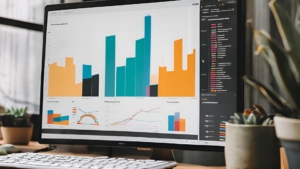 Knowing your viewers allows you to produce content that meets to their specific needs and interests. For instance, a fitness channel with a large female audience aged 25-34 might focus on workouts and nutrition tips tailored to that demographic.
Knowing your viewers allows you to produce content that meets to their specific needs and interests. For instance, a fitness channel with a large female audience aged 25-34 might focus on workouts and nutrition tips tailored to that demographic.
Enhancing Video Titles, Descriptions, and Thumbnails for Better Engagement
1. Compelling Titles: Use keywords that appeal to your target audience and accurately reflect the content.
2. Detailed Descriptions: Include relevant keywords and provide a thorough overview of the video’s content.
3. Eye-catching Thumbnails: Design thumbnails that attract attention and represent the video’s theme.
Real-life Examples of Successful Content Strategies Based on Audience Insights
 Imagine a cooking channel that, upon analyzing demographics, finds that a large segment of its audience is vegetarian. By creating more vegetarian recipes and incorporating relevant keywords into titles and descriptions, the channel can attract and engage more viewers from this demographic. Additionally, by analyzing engagement patterns, the channel can identify which recipes are most popular and create similar content to maintain high engagement levels.
Imagine a cooking channel that, upon analyzing demographics, finds that a large segment of its audience is vegetarian. By creating more vegetarian recipes and incorporating relevant keywords into titles and descriptions, the channel can attract and engage more viewers from this demographic. Additionally, by analyzing engagement patterns, the channel can identify which recipes are most popular and create similar content to maintain high engagement levels.
Best Practices for Ongoing Content Optimization

- Regularly Update Your Strategy: Regularly review analytics to stay updated on shifts in viewer behavior and preferences.

- Experiment with Content Formats: Test different video formats (e.g., tutorials, vlogs, live streams) to see what your audience responds to best.

- Collaborate with Influencers: Partner with influencers who appeal to your target demographic to expand your reach and credibility.

- Utilize Playlists: Group your videos into playlists to boost watch time and make it simpler for viewers to discover related content.
By following these best practices, you can ensure that your content remains relevant and engaging, helping you build a loyal audience and achieve sustained growth on YouTube.
Advanced Techniques in Audience Analysis
 For those looking to gain even deeper insights, advanced techniques in audience analysis can provide a competitive edge. These methods involve using third-party tools, predictive analytics, and custom reports to enhance your understanding of viewer behavior.
For those looking to gain even deeper insights, advanced techniques in audience analysis can provide a competitive edge. These methods involve using third-party tools, predictive analytics, and custom reports to enhance your understanding of viewer behavior.
Use of Third-party Tools for Deeper Insights
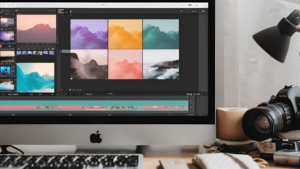 Tools like VidIQ and Tubebuddy offer advanced analytics and insights that go beyond YouTube’s built-in analytics. These tools can assist you in spotting trends, optimizing keywords, and monitoring competitor performance.
Tools like VidIQ and Tubebuddy offer advanced analytics and insights that go beyond YouTube’s built-in analytics. These tools can assist you in spotting trends, optimizing keywords, and monitoring competitor performance.
Predictive Analytics and Trends Analysis
 Predictive analytics can help forecast future performance based on past data. By analyzing trends in viewer behavior, you can anticipate what content will perform well and plan accordingly.
Predictive analytics can help forecast future performance based on past data. By analyzing trends in viewer behavior, you can anticipate what content will perform well and plan accordingly.
Custom Reports and Segmentation
 Custom reports allow you to segment your audience and analyze specific groups in detail. This can help you identify niche segments and tailor your content strategy to meet their unique needs.
Custom reports allow you to segment your audience and analyze specific groups in detail. This can help you identify niche segments and tailor your content strategy to meet their unique needs.
Benefits of Combining YouTube Analytics with Other Digital Marketing Tools
 Combining YouTube Analytics with tools such as Google Analytics, SEMrush, or social media analytics platforms can give you a comprehensive view of your digital marketing efforts. This combined approach allows for more informed decision-making and a cohesive marketing strategy.
Combining YouTube Analytics with tools such as Google Analytics, SEMrush, or social media analytics platforms can give you a comprehensive view of your digital marketing efforts. This combined approach allows for more informed decision-making and a cohesive marketing strategy.
Advanced Strategies for Audience Growth
- Cross-platform Promotion: Use insights from YouTube to inform your strategy on other platforms, creating a cohesive and integrated marketing approach.
- Retargeting Campaigns: Use demographic data to run targeted ad campaigns that re-engage viewers who have previously interacted with your content.
- Content Personalization: Utilize predictive analytics to personalize content recommendations, keeping your audience engaged and encouraging repeat views.
- Competitor Analysis: Regularly assess competitor channels to identify gaps and opportunities within your own content strategy.
By leveraging these advanced techniques, you can gain a deeper understanding of your audience, predict future trends, and create a more effective and dynamic content strategy.
Conclusion
 In this blog, we have examined the power of YouTube Analytics for understanding viewer demographics and engagement trends. By utilizing these insights, you can develop targeted, high-quality content that resonates with your audience, boosts engagement, and promotes channel growth. Ongoing analysis and adaptation are essential for staying competitive in the digital marketing arena. Use the tools and strategies discussed to unlock your YouTube channel’s full potential and achieve your marketing objectives.
In this blog, we have examined the power of YouTube Analytics for understanding viewer demographics and engagement trends. By utilizing these insights, you can develop targeted, high-quality content that resonates with your audience, boosts engagement, and promotes channel growth. Ongoing analysis and adaptation are essential for staying competitive in the digital marketing arena. Use the tools and strategies discussed to unlock your YouTube channel’s full potential and achieve your marketing objectives.
References
- Body Of War Music. (n.d.). Search engine optimization. Retrieved from https://bodyofwarmusic.com/tag/search-engine-optimization/
- The Marketing Heaven. (n.d.). How to get your first 1,000 subscribers – Produce content. Retrieved from https://themarketingheaven.com/how-to-get-your-first-1000-subscribers/
- Top 10 Tu. (n.d.). 10 tips for spreading on social media. Retrieved from https://www.top10tu.com/make-money-online/10-tips-for-spreading-on-social-media
- Single Music. (n.d.). Get an overview of video performance. Retrieved from https://help.single.xyz/knowledge/https/singlemusic.zendesk.com/hc/en-us/articles/9581629856275-when-do-the-vod-dashboard-stats-update-
- Evolution Media UK. (n.d.). Unlocking the power of video analysis: Boost ROI with data-driven insight. Retrieved from https://evo-media.co.uk/blogs/marketingblog/unlocking-the-power-of-video-analysis
- Groovy Ghoulies. (n.d.). Easy ways to grow your YouTube subscribers. Retrieved from https://www.groovyghoulies.net/easy-ways-to-grow-your-youtube-subscribers/
- Prezly. (n.d.). How to create a PR media contact list (with template & tools). Retrieved from https://www.prezly.com/academy/relationships/media-pitch/cheat-codes-for-building-a-better-media-list
- LED Display Boards. (n.d.). Digital advertising in Hyderabad. Retrieved from https://www.leddisplayboards.in/post/digital-advertising-in-hyderabad
- Stick Em Up. (n.d.). Uncovering your target audience: A content marketing guide. Retrieved from https://stick-em-up.co.uk/uncovering-your-target-audience-a-content-marketing-guide/
- TalenAlexander. (n.d.). 10 things content marketers can learn from executive chefs. Retrieved from https://dev.talenalexander.com/industry-news/10-things-content-marketers-can-learn-from-executive-chefs/
- Tactical Project Management. (n.d.). Top 6 strategies for boosting your website visibility. Retrieved from https://www.tacticalprojectmanagement.com/top-6-strategies-for-boosting-website-visibility/
- Sid’s Project Impact. (n.d.). Why is content optimization important? Retrieved from https://sidsprojectimpact.com/thread/why-is-content-optimization-important
- Grace Themes. (n.d.). Top 4 advantages of digital marketing for nonprofits. Retrieved from https://gracethemes.com/top-4-advantages-of-digital-marketing-for-nonprofits/
- 618 Media. (n.d.). 9 viewer engagement metrics for YouTube ads. Retrieved from https://618media.com/en/blog/viewer-engagement-metrics-for-youtube-ads/
Latest Blogs

Present Simple Tense 1
English Blogs “Let’s Learn, Explore, and Connect to the World” Present Simple Tense 1 I. Introduction to the Present Simple Tense in English Mastering the

Present Simple Tense 2
English Blogs “Let’s Learn, Explore, and Connect to the World” Present Simple Tense 2 II. Understanding the Present Simple Tense Definition and Structure At its
Reading comprehension quiz
Check out our books and more!

A Beginner's Guide to Video Editing: Be a Pro in Just 24 Hours
Discover your inner editing abilities with this complete guide made for beginners to master the art of video editing smoothly. ‘A Beginner’s Guide to Video Editing: Be a Pro in Just 24 Hours’ is your way to discover the secrets of professional-grade editing within a day.
Check out our Blogs!
Read our everyday blogs and expand your knowledge about English and Video Editing here in SEKAEL.
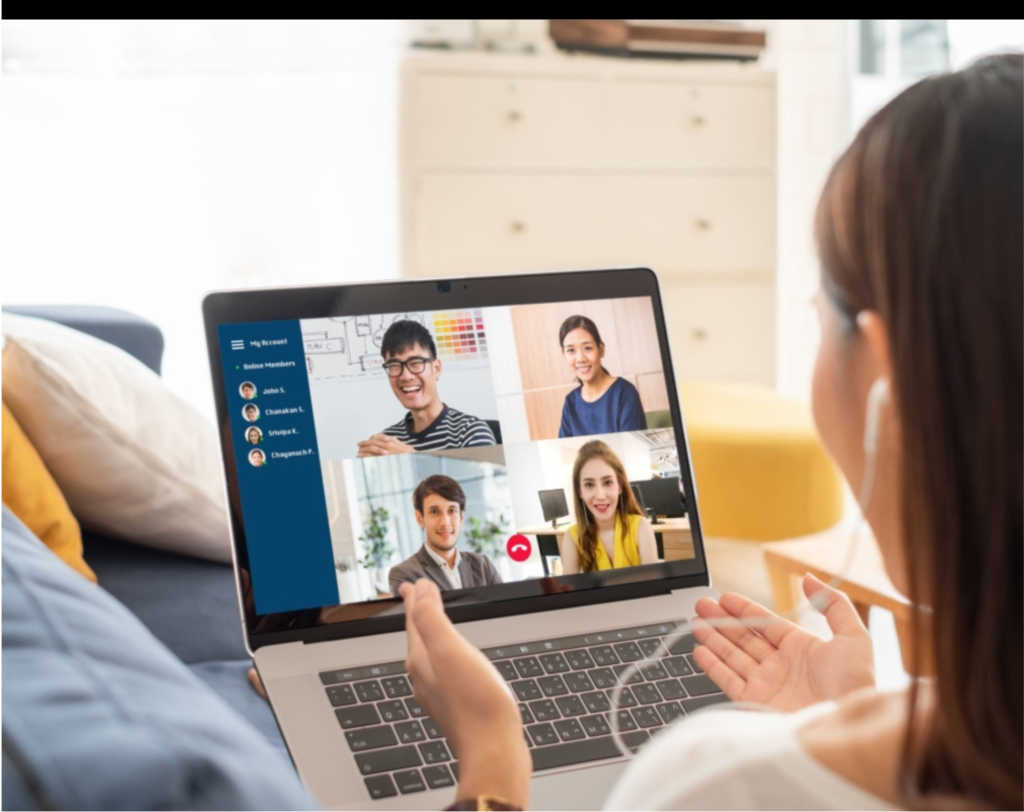

Learn through Basic English Grammar Blogs by widening your English vocabulary and learning English Grammar.




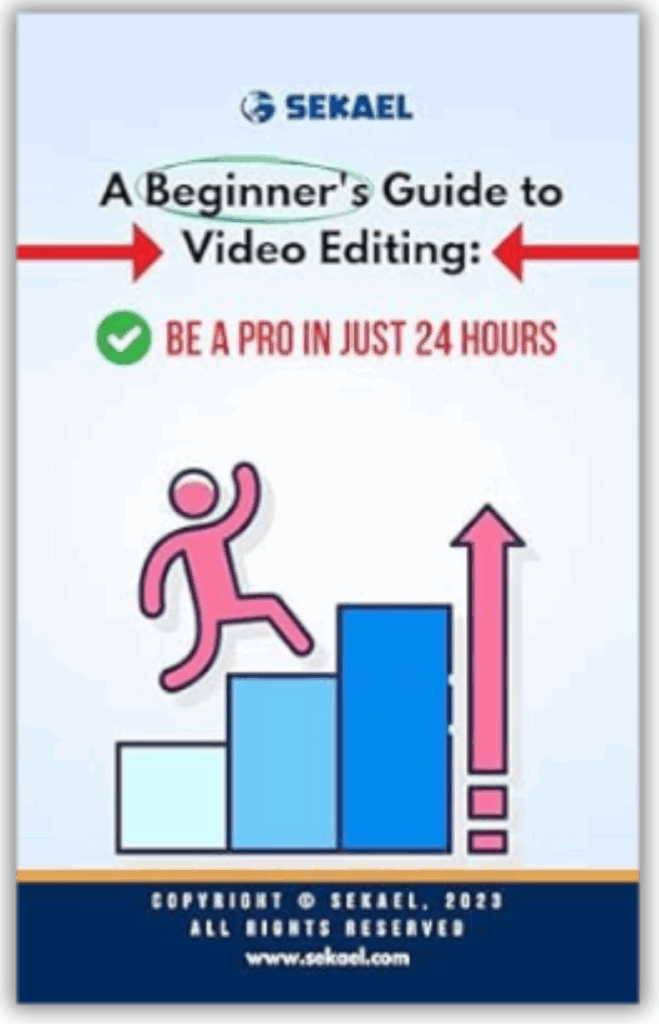






























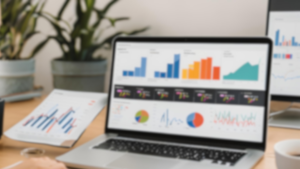
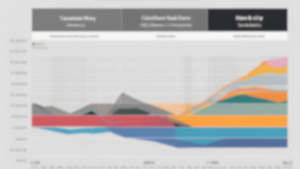
 In summary, growing a YouTube channel requires a multifaceted approach. By creating compelling content tailored to your niche, collaborating with other YouTubers to expand your reach, and building a loyal subscriber base through engagement and strategic CTAs, you can achieve sustained success. Implementing these strategies will not only help you stand out in a crowded platform but also foster a dedicated community around your content. As YouTube continues to evolve, staying adaptable and responsive to new trends and viewer preferences will be crucial. Embrace these growth strategies, and watch your channel flourish in the ever-changing digital landscape.
In summary, growing a YouTube channel requires a multifaceted approach. By creating compelling content tailored to your niche, collaborating with other YouTubers to expand your reach, and building a loyal subscriber base through engagement and strategic CTAs, you can achieve sustained success. Implementing these strategies will not only help you stand out in a crowded platform but also foster a dedicated community around your content. As YouTube continues to evolve, staying adaptable and responsive to new trends and viewer preferences will be crucial. Embrace these growth strategies, and watch your channel flourish in the ever-changing digital landscape.









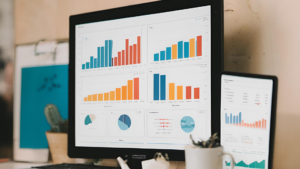




























 Finding the right keywords is like laying the foundation for your YouTube SEO strategy. This highlights keyword research as the crucial first step for optimizing your videos. Like magic words, including the right keywords in your content unlocks greater discoverability for your videos, attracting a wider audience. This uses a metaphor to emphasize the positive impact of keywords.
Finding the right keywords is like laying the foundation for your YouTube SEO strategy. This highlights keyword research as the crucial first step for optimizing your videos. Like magic words, including the right keywords in your content unlocks greater discoverability for your videos, attracting a wider audience. This uses a metaphor to emphasize the positive impact of keywords. In the next section, we will delve into how YouTube’s algorithm works and what factors influence video ranking.
In the next section, we will delve into how YouTube’s algorithm works and what factors influence video ranking. Understanding how YouTube’s algorithm works is essential for optimizing your videos and enhancing their discoverability. The algorithm is a complex system designed to serve users the most relevant and engaging content based on various factors. Here’s a closer look at how it operates:
Understanding how YouTube’s algorithm works is essential for optimizing your videos and enhancing their discoverability. The algorithm is a complex system designed to serve users the most relevant and engaging content based on various factors. Here’s a closer look at how it operates:





 The video title is one of those first things potential viewers see. A well-crafted title can significantly improve your video’s click-through rate (CTR). Below are the tips for creative titles:
The video title is one of those first things potential viewers see. A well-crafted title can significantly improve your video’s click-through rate (CTR). Below are the tips for creative titles: Your video description provides additional context and helps the alogortihm of YouTube’s understand what your video is all about. A well-written description can also guide viewers on what to expect, potentially increasing watch time and engagement. Here’s how to optimize your descriptions:
Your video description provides additional context and helps the alogortihm of YouTube’s understand what your video is all about. A well-written description can also guide viewers on what to expect, potentially increasing watch time and engagement. Here’s how to optimize your descriptions:
 Tags are an essential component of YouTube SEO, helping the platform understand the context and content of your video. Properly utilized tags can improve your video’s searchability and ensure it reaches the right audience.
Tags are an essential component of YouTube SEO, helping the platform understand the context and content of your video. Properly utilized tags can improve your video’s searchability and ensure it reaches the right audience. Did you know that tags provide YouTube with additional information about your video, complementing your title and description. They help categorize your content and make it easier for the algorithm to recommend your video in related searches and suggested videos.
Did you know that tags provide YouTube with additional information about your video, complementing your title and description. They help categorize your content and make it easier for the algorithm to recommend your video in related searches and suggested videos. Using irrelevant tags might seem like a way to attract more viewers, but it can backfire. Misleading tags can confuse the algorithm and lead to lower rankings. Chhoose tags that are directly relevant to your video content.
Using irrelevant tags might seem like a way to attract more viewers, but it can backfire. Misleading tags can confuse the algorithm and lead to lower rankings. Chhoose tags that are directly relevant to your video content.  Thumbnails and Click-Through Rate (CTR) are crucial factors that influence a video’s performance on YouTube. An engaging thumbnail can attract more clicks, while a high CTR indicates to YouTube that your video is relevant and interesting to viewers.
Thumbnails and Click-Through Rate (CTR) are crucial factors that influence a video’s performance on YouTube. An engaging thumbnail can attract more clicks, while a high CTR indicates to YouTube that your video is relevant and interesting to viewers. Thumbnails are the first visual impression potential viewers get of your video. An effective thumbnail should:
Thumbnails are the first visual impression potential viewers get of your video. An effective thumbnail should: CTR measures how many people who click on your video in percentage after seeing its thumbnail and title. Improving your CTR can significantly boost your video’s performance. Here’s how:
CTR measures how many people who click on your video in percentage after seeing its thumbnail and title. Improving your CTR can significantly boost your video’s performance. Here’s how:
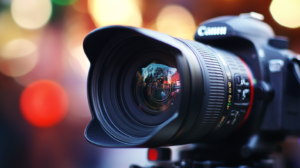

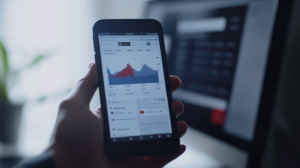





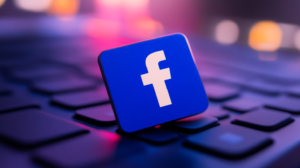



 In summary, conversion tracking is essential for understanding the impact of your Facebook advertising efforts. By properly configuring the Facebook pixel, defining custom conversions, and leveraging Aggregated Event Measurement, marketers can gain a clearer view of user actions and align their strategies to maximize campaign performance and business impact.
In summary, conversion tracking is essential for understanding the impact of your Facebook advertising efforts. By properly configuring the Facebook pixel, defining custom conversions, and leveraging Aggregated Event Measurement, marketers can gain a clearer view of user actions and align their strategies to maximize campaign performance and business impact.
 Facebook’s Attribution tool lets you see the big picture of how various marketing efforts on different platforms contribute to sales or other desired actions. Whether it’s paid advertising, organic social media, email marketing, or direct website traffic, these multi-channel insights enable you to see the combined impact of your marketing efforts.
Facebook’s Attribution tool lets you see the big picture of how various marketing efforts on different platforms contribute to sales or other desired actions. Whether it’s paid advertising, organic social media, email marketing, or direct website traffic, these multi-channel insights enable you to see the combined impact of your marketing efforts. In today’s multi-device world, users often interact with your brand on desktops, smartphones, and tablets before making a purchase. Facebook Attribution’s cross-device reporting helps you trace the customer journey across all devices, providing a more comprehensive view of user behavior and uncovering conversion opportunities.
In today’s multi-device world, users often interact with your brand on desktops, smartphones, and tablets before making a purchase. Facebook Attribution’s cross-device reporting helps you trace the customer journey across all devices, providing a more comprehensive view of user behavior and uncovering conversion opportunities. By effectively utilizing the Facebook Attribution tool, you can have a grasp of a comprehensive understanding of your campaigns’ performance, refine your marketing strategy, and attribute conversions more accurately across channels and devices.
By effectively utilizing the Facebook Attribution tool, you can have a grasp of a comprehensive understanding of your campaigns’ performance, refine your marketing strategy, and attribute conversions more accurately across channels and devices.

 Mastering Facebook Analytics and conversion tracking is essential for any marketer aiming to attribute sales and leads back to their efforts. By utilizing tools like Facebook Attribution, pixel tracking, and detailed funnel analysis, by leveraging data and understanding customer journeys, marketers can refine their campaigns for maximum impact. Following the best practices outlined in this guide will help you maximize ROI, refine your marketing strategies, and align your campaigns with your business objectives. While the process may seem complex, the rewards of correctly attributing conversions to your Facebook marketing efforts are invaluable, ensuring that every dollar spent is delivering measurable value to your bottom line.
Mastering Facebook Analytics and conversion tracking is essential for any marketer aiming to attribute sales and leads back to their efforts. By utilizing tools like Facebook Attribution, pixel tracking, and detailed funnel analysis, by leveraging data and understanding customer journeys, marketers can refine their campaigns for maximum impact. Following the best practices outlined in this guide will help you maximize ROI, refine your marketing strategies, and align your campaigns with your business objectives. While the process may seem complex, the rewards of correctly attributing conversions to your Facebook marketing efforts are invaluable, ensuring that every dollar spent is delivering measurable value to your bottom line.

 The arena of digital marketing has completely changed over the last few years. This is because new technologies keep coming out and people’s habits on the internet keep evolving. Initially, digital marketing strategies were predominantly focused on email blasts and banner ads, which were broad in their approach and often missed the mark regarding personal connection and engagement. As the internet became more interactive and social media platforms emerged, marketers quickly recognized the potential of these new channels to connect more directly and meaningfully with audiences.
The arena of digital marketing has completely changed over the last few years. This is because new technologies keep coming out and people’s habits on the internet keep evolving. Initially, digital marketing strategies were predominantly focused on email blasts and banner ads, which were broad in their approach and often missed the mark regarding personal connection and engagement. As the internet became more interactive and social media platforms emerged, marketers quickly recognized the potential of these new channels to connect more directly and meaningfully with audiences. The importance of Facebook Messenger in today’s marketing landscape cannot be overstated. As consumers increasingly expect instant and personalized interactions, Messenger’s role continues to grow as a necessary and dynamic platform for effective digital marketing. This blog will explore how businesses can get the most out of Facebook Messenger not just to communicate but to connect and convert, transforming everyday interactions into lasting customer relationships.
The importance of Facebook Messenger in today’s marketing landscape cannot be overstated. As consumers increasingly expect instant and personalized interactions, Messenger’s role continues to grow as a necessary and dynamic platform for effective digital marketing. This blog will explore how businesses can get the most out of Facebook Messenger not just to communicate but to connect and convert, transforming everyday interactions into lasting customer relationships.
 Facebook Messenger boasts impressive statistics that highlight its potential as a marketing channel. Here are some key figures:
Facebook Messenger boasts impressive statistics that highlight its potential as a marketing channel. Here are some key figures: Marketing through Facebook Messenger provides numerous benefits for companies aiming to improve their digital marketing efforts. The platform not only facilitates communication with vast audiences but also ensures that these interactions are more personalized and engaging. Here are some of the key benefits:
Marketing through Facebook Messenger provides numerous benefits for companies aiming to improve their digital marketing efforts. The platform not only facilitates communication with vast audiences but also ensures that these interactions are more personalized and engaging. Here are some of the key benefits: One of the foremost benefits of using Facebook Messenger for marketing is the ability to communicate with customers instantly. Unlike traditional methods that often involve delays (such as email where responses can take hours or even days), Messenger allows for real-time dialogue. This immediacy can be crucial during various stages of the customer journey, especially when consumers are making purchasing decisions or need urgent support. Instant communication helps maintain the flow of conversation, mimicking the natural back-and-forth of in-person interactions, which can lead to quicker conversions and enhanced customer relations.
One of the foremost benefits of using Facebook Messenger for marketing is the ability to communicate with customers instantly. Unlike traditional methods that often involve delays (such as email where responses can take hours or even days), Messenger allows for real-time dialogue. This immediacy can be crucial during various stages of the customer journey, especially when consumers are making purchasing decisions or need urgent support. Instant communication helps maintain the flow of conversation, mimicking the natural back-and-forth of in-person interactions, which can lead to quicker conversions and enhanced customer relations. Messenger marketing excels in its capacity for message personalization. With access to data from users’ Facebook profiles and past interactions with the brand on the platform, businesses can tailor their communications to meet the particular preferences and requirements of every client. Personalized messages can include everything from addressing the customer by name to making recommendations based on previous purchases or browsing behavior. This level of customization makes the customer feel valued and understood, thereby increasing the effectiveness of the marketing efforts.
Messenger marketing excels in its capacity for message personalization. With access to data from users’ Facebook profiles and past interactions with the brand on the platform, businesses can tailor their communications to meet the particular preferences and requirements of every client. Personalized messages can include everything from addressing the customer by name to making recommendations based on previous purchases or browsing behavior. This level of customization makes the customer feel valued and understood, thereby increasing the effectiveness of the marketing efforts. The expectation for quick responses in today’s digital world is higher than ever. Facebook Messenger enables businesses to meet these expectations through automated responses or chatbots that can provide instant answers to common queries around the clock. For more complex inquiries, the platform facilitates a seamless handoff to human customer service representatives. This blend of automation and personal touch and ensures that customer inquiries are addressed promptly, significantly boosting customer satisfaction and loyalty.
The expectation for quick responses in today’s digital world is higher than ever. Facebook Messenger enables businesses to meet these expectations through automated responses or chatbots that can provide instant answers to common queries around the clock. For more complex inquiries, the platform facilitates a seamless handoff to human customer service representatives. This blend of automation and personal touch and ensures that customer inquiries are addressed promptly, significantly boosting customer satisfaction and loyalty.
 Implementing Facebook Messenger as a marketing tool involves several strategic steps that enable businesses to effectively communicate and engage with their customers. Here’s a guide to setting up and optimizing Messenger for marketing purposes.
Implementing Facebook Messenger as a marketing tool involves several strategic steps that enable businesses to effectively communicate and engage with their customers. Here’s a guide to setting up and optimizing Messenger for marketing purposes. The first step in utilizing Messenger for marketing is setting up a business account. This can be done through your existing Facebook Business Page. If you don’t already have one, you’ll need to create a Facebook Page for your business. Once your Page is set up, ensure that the Messenger feature is activated. You can then customize your Messenger settings, such as greeting texts and instant replies, to align with your business’s tone and customer engagement strategy.
The first step in utilizing Messenger for marketing is setting up a business account. This can be done through your existing Facebook Business Page. If you don’t already have one, you’ll need to create a Facebook Page for your business. Once your Page is set up, ensure that the Messenger feature is activated. You can then customize your Messenger settings, such as greeting texts and instant replies, to align with your business’s tone and customer engagement strategy.
 To manage interactions efficiently, especially if you anticipate a high volume of inquiries, employing automated tools like chatbots is advisable. Chatbots can handle common customer queries, provide information about products and services, and guide users through the purchasing process. These tools can be customized to reflect your brand’s voice and provide consistent, helpful service even when live agents are not available.
To manage interactions efficiently, especially if you anticipate a high volume of inquiries, employing automated tools like chatbots is advisable. Chatbots can handle common customer queries, provide information about products and services, and guide users through the purchasing process. These tools can be customized to reflect your brand’s voice and provide consistent, helpful service even when live agents are not available.


 With ongoing technological advancements, the realm of Messenger marketing is set to undergo substantial transformation. Here are a few predictions and emerging technologies that are likely to shape the future of this dynamic marketing channel.
With ongoing technological advancements, the realm of Messenger marketing is set to undergo substantial transformation. Here are a few predictions and emerging technologies that are likely to shape the future of this dynamic marketing channel. Facebook Messenger marketing has proven itself as a pivotal tool in the digital marketing arsenal, offering unparalleled opportunities for direct and personalized communication with customers. With its capacity for instant messaging, high engagement rates, and scalable automation through AI and chatbots, Messenger empowers businesses to connect with their audience in meaningful ways. As we look towards the future, the potential enhancements in technology promise even greater effectiveness and opportunities. Businesses looking to have an edge in the competitive digital landscape should consider adopting Messenger strategies to enhance customer interaction, drive engagement, and ultimately, boost conversion rates.
Facebook Messenger marketing has proven itself as a pivotal tool in the digital marketing arsenal, offering unparalleled opportunities for direct and personalized communication with customers. With its capacity for instant messaging, high engagement rates, and scalable automation through AI and chatbots, Messenger empowers businesses to connect with their audience in meaningful ways. As we look towards the future, the potential enhancements in technology promise even greater effectiveness and opportunities. Businesses looking to have an edge in the competitive digital landscape should consider adopting Messenger strategies to enhance customer interaction, drive engagement, and ultimately, boost conversion rates.


 Facebook Live serves as a critical component in modern marketing strategies, tapping into the growing consumer preference for live video. Studies have shown that users spend up to three times longer watching live videos when compared to pre-recorded ones, highlighting the compelling nature of real-time interaction. Businesses utilize this platform to host Q&A sessions, behind-the-scenes tours, product demonstrations, and more, effectively increasing engagement and boosting viewer retention. The immediate feedback loop created during live broadcasts provides invaluable insights into viewer preferences and behaviors, enabling marketers to refine their strategies promptly.
Facebook Live serves as a critical component in modern marketing strategies, tapping into the growing consumer preference for live video. Studies have shown that users spend up to three times longer watching live videos when compared to pre-recorded ones, highlighting the compelling nature of real-time interaction. Businesses utilize this platform to host Q&A sessions, behind-the-scenes tours, product demonstrations, and more, effectively increasing engagement and boosting viewer retention. The immediate feedback loop created during live broadcasts provides invaluable insights into viewer preferences and behaviors, enabling marketers to refine their strategies promptly. With Facebook Live, you can use your phone or computer to broadcast a live video directly on Facebook. This video will be shared live on your news feed for your friends and followers. Since its broader rollout in 2016, Facebook Live has become an integral tool for individuals, brands, and content creators aiming to engage their followers in real-time. This platform supports different types of content, from spontaneous broadcasts to highly produced events, making it versatile for various use cases.
With Facebook Live, you can use your phone or computer to broadcast a live video directly on Facebook. This video will be shared live on your news feed for your friends and followers. Since its broader rollout in 2016, Facebook Live has become an integral tool for individuals, brands, and content creators aiming to engage their followers in real-time. This platform supports different types of content, from spontaneous broadcasts to highly produced events, making it versatile for various use cases.
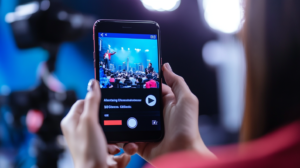 Effectively leveraging Facebook Live requires thorough planning and strategizing before going live. Successful broadcasts don’t happen by accident—they are the result of careful preparation, understanding the audience, and curating the content to match viewers’ interests and needs. Here’s how you can plan your Facebook Live session to maximize engagement and impact.
Effectively leveraging Facebook Live requires thorough planning and strategizing before going live. Successful broadcasts don’t happen by accident—they are the result of careful preparation, understanding the audience, and curating the content to match viewers’ interests and needs. Here’s how you can plan your Facebook Live session to maximize engagement and impact.



 Executing a successful Facebook Live broadcast requires not only engaging content but also a reliable technical setup. Having good equipment and software makes a big difference in both how good it looks and how smoothly it runs for you and your viewers.
Executing a successful Facebook Live broadcast requires not only engaging content but also a reliable technical setup. Having good equipment and software makes a big difference in both how good it looks and how smoothly it runs for you and your viewers.
 Facebook Live lets you connect with viewers directly as you broadcast! This two-way street keeps your audience hooked and coming back for more. Effective engagement not only makes the broadcast more interactive and lively but also encourages viewers to participate and share the content. Here are some techniques to interact with your audience during the broadcast, along with examples of engaging live content formats.
Facebook Live lets you connect with viewers directly as you broadcast! This two-way street keeps your audience hooked and coming back for more. Effective engagement not only makes the broadcast more interactive and lively but also encourages viewers to participate and share the content. Here are some techniques to interact with your audience during the broadcast, along with examples of engaging live content formats.

 Facebook Live offers a dynamic tool for marketers to enhance their digital strategies by providing a platform for real-time customer engagement and content delivery. Integrating live video into your overall marketing strategy can increase reach, engagement, and conversion rates, especially when it is part of a comprehensive and interactive campaign.
Facebook Live offers a dynamic tool for marketers to enhance their digital strategies by providing a platform for real-time customer engagement and content delivery. Integrating live video into your overall marketing strategy can increase reach, engagement, and conversion rates, especially when it is part of a comprehensive and interactive campaign.

 After a Facebook Live session concludes, the opportunity to connect with your audience and leverage the content you’ve created continues. Effective post-broadcast practices can help maximize the impact of your live session, maintain audience interest, and improve future broadcasts based on performance insights.
After a Facebook Live session concludes, the opportunity to connect with your audience and leverage the content you’ve created continues. Effective post-broadcast practices can help maximize the impact of your live session, maintain audience interest, and improve future broadcasts based on performance insights.

 Throughout this guide, we’ve explored the dynamic capabilities of Facebook Live as an indispensable tool for video marketing. From strategic planning and technical setup to engaging real-time interaction and effective post-broadcast practices, Facebook Live offers a comprehensive platform for connecting with audiences authentically and immediately. The success stories of brands like BuzzFeed, Benefit Cosmetics, and Tough Mudder underscores its potential to transform marketing strategies and foster deeper audience relationships. Embrace Facebook Live to elevate your marketing efforts; its direct engagement capabilities can significantly enhance your brand’s visibility and interaction in today’s digital landscape.
Throughout this guide, we’ve explored the dynamic capabilities of Facebook Live as an indispensable tool for video marketing. From strategic planning and technical setup to engaging real-time interaction and effective post-broadcast practices, Facebook Live offers a comprehensive platform for connecting with audiences authentically and immediately. The success stories of brands like BuzzFeed, Benefit Cosmetics, and Tough Mudder underscores its potential to transform marketing strategies and foster deeper audience relationships. Embrace Facebook Live to elevate your marketing efforts; its direct engagement capabilities can significantly enhance your brand’s visibility and interaction in today’s digital landscape.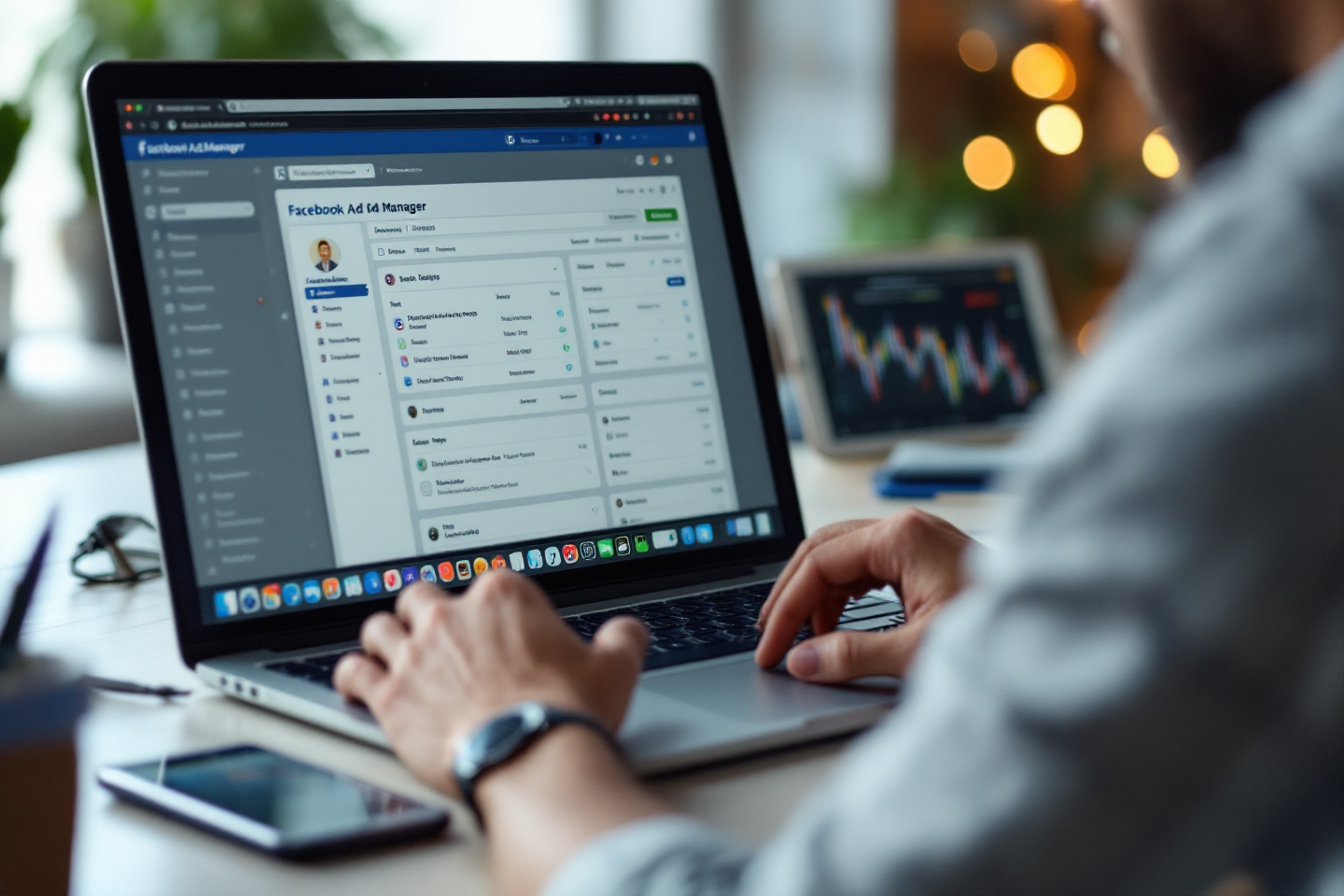
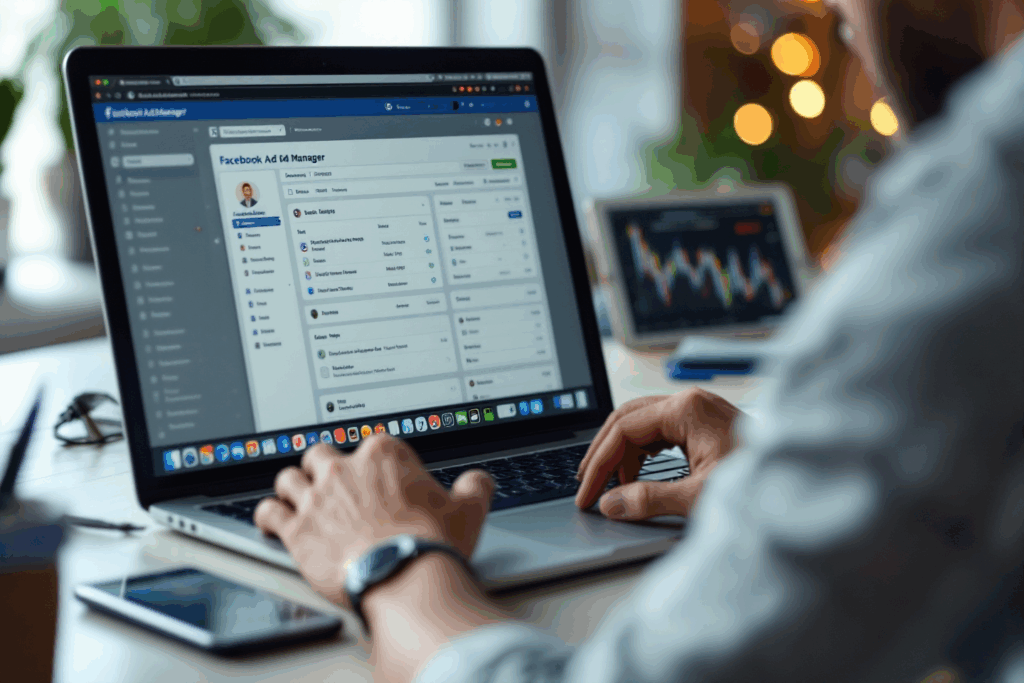
 In the digital age, advertising has transcended traditional boundaries, evolving into a dynamic force that drives consumer behavior and business growth. Among the myriad of digital marketing strategies, targeted advertising stands out as a cornerstone, enabling businesses to deliver their messages to the right audience at the right time. This precision not only enhances the effectiveness of campaigns but also maximizes return on investment by minimizing the wastage of resources on uninterested parties.
In the digital age, advertising has transcended traditional boundaries, evolving into a dynamic force that drives consumer behavior and business growth. Among the myriad of digital marketing strategies, targeted advertising stands out as a cornerstone, enabling businesses to deliver their messages to the right audience at the right time. This precision not only enhances the effectiveness of campaigns but also maximizes return on investment by minimizing the wastage of resources on uninterested parties.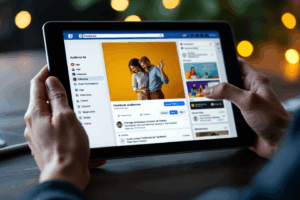 With billions of users and robust data analysis, Facebook reigns supreme in online advertising. It provides marketers with an unmatched reach across various demographics, making it crucial for targeting specific audiences. Facebook’s advanced ad tools allow for precise targeting based on factors like age, interests, and online behavior, guaranteeing that ads reach the most relevant viewers.
With billions of users and robust data analysis, Facebook reigns supreme in online advertising. It provides marketers with an unmatched reach across various demographics, making it crucial for targeting specific audiences. Facebook’s advanced ad tools allow for precise targeting based on factors like age, interests, and online behavior, guaranteeing that ads reach the most relevant viewers. Facebook Ads represent one of the most powerful tools in the digital marketer’s arsenal. They leverage Facebook’s extensive user network to deliver tailored advertisements directly to a selected audience. This system operates within the Facebook platform, including Instagram and Messenger, allowing advertisers to place their messages in front of users not just based on traditional ad spaces but also integrated naturally into their social feeds.
Facebook Ads represent one of the most powerful tools in the digital marketer’s arsenal. They leverage Facebook’s extensive user network to deliver tailored advertisements directly to a selected audience. This system operates within the Facebook platform, including Instagram and Messenger, allowing advertisers to place their messages in front of users not just based on traditional ad spaces but also integrated naturally into their social feeds.
 Facebook ads go far and wide, reaching nearly everyone on the planet. Powerful targeting tools pinpoint the right audience using all sorts of info – age, location, what they’re into, and even how they use Facebook. Plus, Facebook’s innovative system prioritizes showing your ads to people most likely to care, so you get the biggest bang for your buck.
Facebook ads go far and wide, reaching nearly everyone on the planet. Powerful targeting tools pinpoint the right audience using all sorts of info – age, location, what they’re into, and even how they use Facebook. Plus, Facebook’s innovative system prioritizes showing your ads to people most likely to care, so you get the biggest bang for your buck.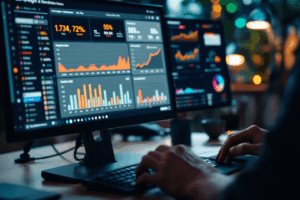 Facebook goes beyond just showing your ads to a lot of people—it helps you see how well they’re working, too. With its analytics tools, you can track your campaigns in real time, see who sees your ads, and even measure whether people are taking the actions you want. This lets you constantly improve your marketing strategy to get the best results.
Facebook goes beyond just showing your ads to a lot of people—it helps you see how well they’re working, too. With its analytics tools, you can track your campaigns in real time, see who sees your ads, and even measure whether people are taking the actions you want. This lets you constantly improve your marketing strategy to get the best results. In the digital marketing world, the scattergun approach of traditional advertising is being swiftly replaced by targeted advertising. This strategy is essential not only for maximizing the effectiveness of advertising campaigns but also for enhancing user experience by aligning content with user preferences and needs.
In the digital marketing world, the scattergun approach of traditional advertising is being swiftly replaced by targeted advertising. This strategy is essential not only for maximizing the effectiveness of advertising campaigns but also for enhancing user experience by aligning content with user preferences and needs. Through Facebook ads, marketers can achieve a high degree of granularity in their advertising efforts, making them an essential element of modern digital marketing strategies. Whether the goal is to increase brand recognition, boost website traffic, or drive sales, Facebook’s sophisticated targeting capabilities make it possible to achieve these objectives with remarkable efficiency and effectiveness.
Through Facebook ads, marketers can achieve a high degree of granularity in their advertising efforts, making them an essential element of modern digital marketing strategies. Whether the goal is to increase brand recognition, boost website traffic, or drive sales, Facebook’s sophisticated targeting capabilities make it possible to achieve these objectives with remarkable efficiency and effectiveness. Demographic targeting involves segmenting the market based on attributes such as age, gender, location, marital status, education level, and more. Facebook, with its vast database, offers advertisers the ability to zero in on these demographics with precision, crafting messages that resonate with each group’s unique preferences and lifestyles.
Demographic targeting involves segmenting the market based on attributes such as age, gender, location, marital status, education level, and more. Facebook, with its vast database, offers advertisers the ability to zero in on these demographics with precision, crafting messages that resonate with each group’s unique preferences and lifestyles. Age:
Age: 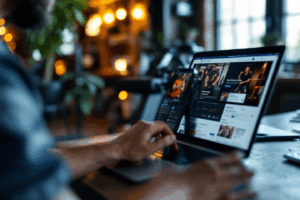 Location: Geo-targeting allows ads to be shown to users based on specific locations, from broad regions to particular cities or even neighborhoods. This is particularly useful for local businesses that want to attract nearby customers, such as restaurants or retail stores. A local gym might target ads to Facebook users within a 10-mile radius to drive local sign-ups.
Location: Geo-targeting allows ads to be shown to users based on specific locations, from broad regions to particular cities or even neighborhoods. This is particularly useful for local businesses that want to attract nearby customers, such as restaurants or retail stores. A local gym might target ads to Facebook users within a 10-mile radius to drive local sign-ups. Gender: Products or services often appeal more to one gender than another. For instance, a brand that sells women’s athletic wear will target female Facebook users to increase the relevance and effectiveness of their advertising.
Gender: Products or services often appeal more to one gender than another. For instance, a brand that sells women’s athletic wear will target female Facebook users to increase the relevance and effectiveness of their advertising. Marital Status: This can be a crucial factor in marketing products related to relationship stages, such as wedding services targeting engaged users or baby products aimed at newly married couples.
Marital Status: This can be a crucial factor in marketing products related to relationship stages, such as wedding services targeting engaged users or baby products aimed at newly married couples. Education Level: Targeting based on education can help tailor the messaging and product offerings based on the audience’s educational background. For example, educational software for advanced learning can be targeted at users who have indicated a higher education level.
Education Level: Targeting based on education can help tailor the messaging and product offerings based on the audience’s educational background. For example, educational software for advanced learning can be targeted at users who have indicated a higher education level.
 However, demographic targeting does have its limitations. Relying solely on demographic data might lead to assumptions that overlook the diversity within each group. Users within the same demographic can have vastly different interests and behaviors, which means advertisers might miss potential customers who fall outside their targeted demographics but may still be interested in the product.
However, demographic targeting does have its limitations. Relying solely on demographic data might lead to assumptions that overlook the diversity within each group. Users within the same demographic can have vastly different interests and behaviors, which means advertisers might miss potential customers who fall outside their targeted demographics but may still be interested in the product. Interest-based targeting is a powerful method that Facebook offers to help advertisers reach users based on their hobbies, likes, and activities on the platform. This approach goes beyond demographic factors, diving deeper into the audience’s psyche and preferences, allowing for more personalized and relevant advertising.
Interest-based targeting is a powerful method that Facebook offers to help advertisers reach users based on their hobbies, likes, and activities on the platform. This approach goes beyond demographic factors, diving deeper into the audience’s psyche and preferences, allowing for more personalized and relevant advertising.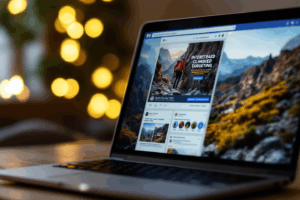


 Information on past purchases, both on and off Facebook, gives advertisers clues about what products users might be interested in buying again.
Information on past purchases, both on and off Facebook, gives advertisers clues about what products users might be interested in buying again. Data on whether users access Facebook from mobile devices, desktops, or tablets, helping tailor ads to the device most commonly used.
Data on whether users access Facebook from mobile devices, desktops, or tablets, helping tailor ads to the device most commonly used. Tracks indications of recent travels or regular commuting, useful for local businesses or travel-related services.
Tracks indications of recent travels or regular commuting, useful for local businesses or travel-related services. Insights into which types of posts and ads users have interacted with in the past, including likes, shares, and comments.
Insights into which types of posts and ads users have interacted with in the past, including likes, shares, and comments.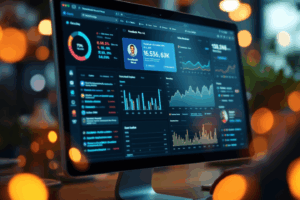 Data collected from websites and apps connected with Facebook, through tools like Facebook Pixel and SDK, which track user interactions outside of Facebook itself.
Data collected from websites and apps connected with Facebook, through tools like Facebook Pixel and SDK, which track user interactions outside of Facebook itself.
 The balance between broad and narrow targeting is crucial. Too broad, and you risk diluting your message across an audience that may not be interested; too narrow, and you may miss potential customers who could convert if given the chance. The goal is to find a sweet spot where the targeting is specific enough to be relevant yet not so exclusive that it omits potential leads. This balance maximizes both reach and relevance, ensuring optimal use of your advertising budget.
The balance between broad and narrow targeting is crucial. Too broad, and you risk diluting your message across an audience that may not be interested; too narrow, and you may miss potential customers who could convert if given the chance. The goal is to find a sweet spot where the targeting is specific enough to be relevant yet not so exclusive that it omits potential leads. This balance maximizes both reach and relevance, ensuring optimal use of your advertising budget.
 The integration of these targeting strategies enables marketers to craft campaigns that are not just seen but are also relevant and compelling to the audience they reach. This relevance is key to driving higher engagement rates, increasing conversions, and ultimately maximizing the return on investment in advertising spend.
The integration of these targeting strategies enables marketers to craft campaigns that are not just seen but are also relevant and compelling to the audience they reach. This relevance is key to driving higher engagement rates, increasing conversions, and ultimately maximizing the return on investment in advertising spend.





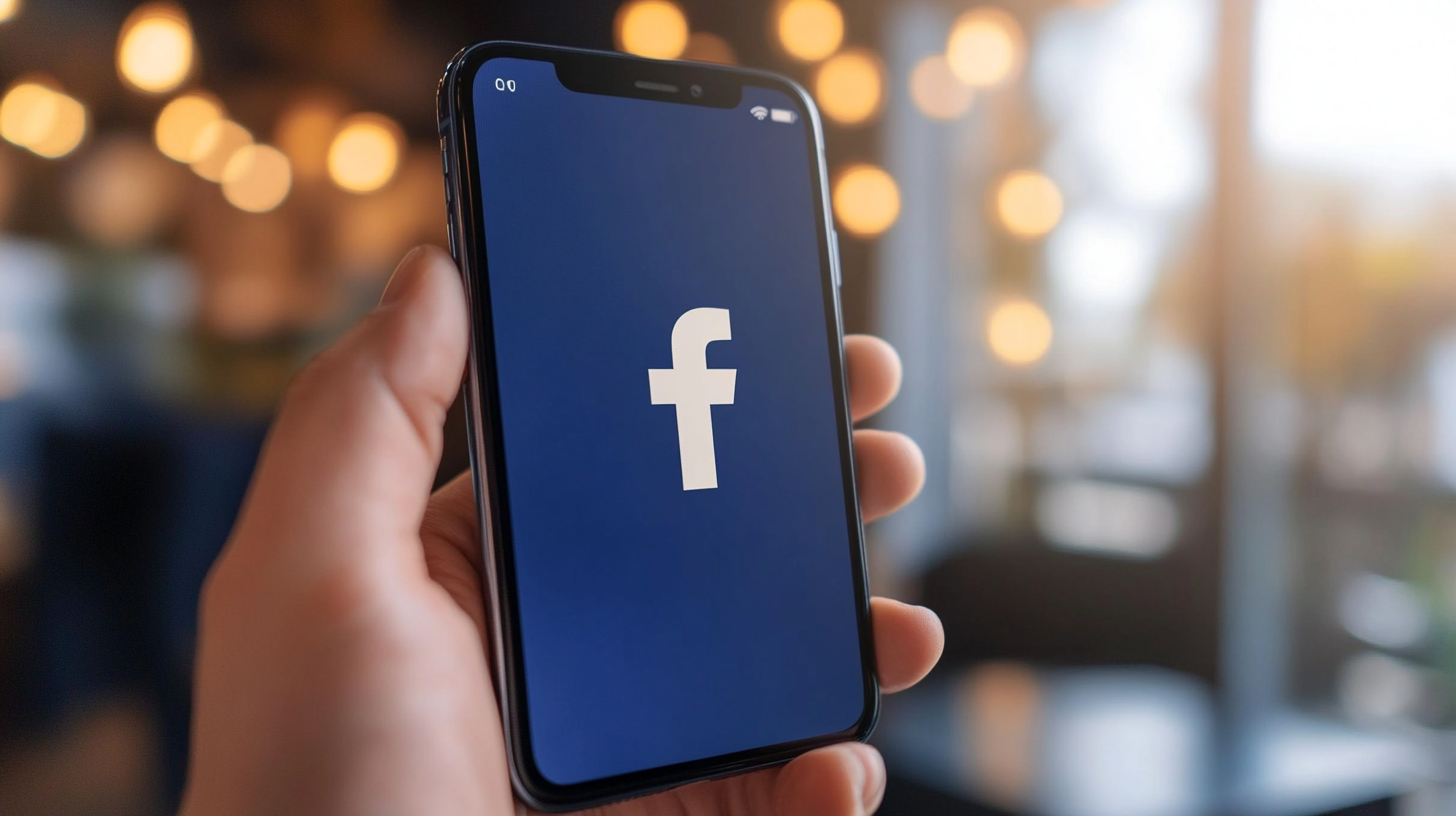
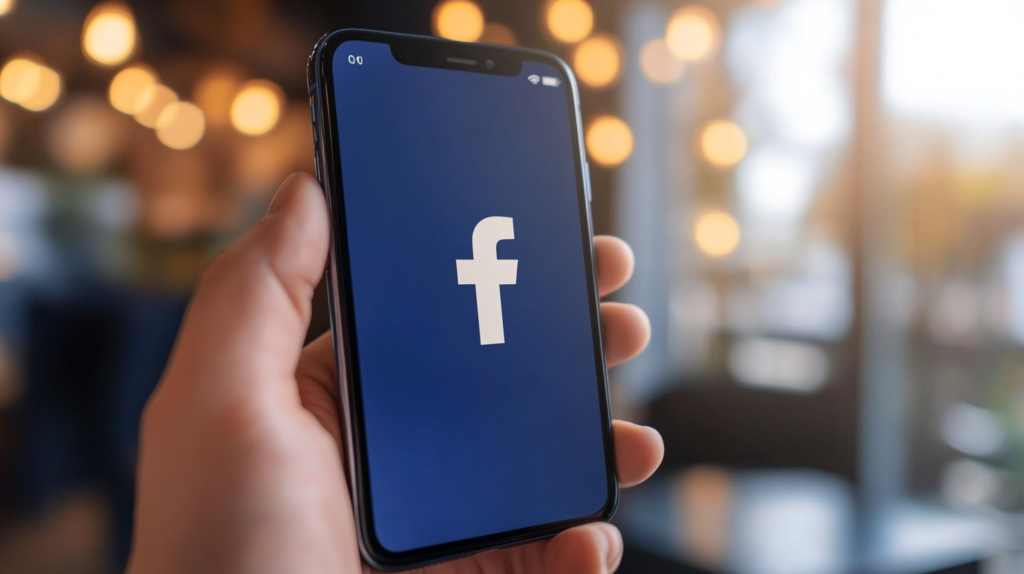
 The rise of social media in the last twenty years has revolutionized marketing.
The rise of social media in the last twenty years has revolutionized marketing. Facebook Groups serve as virtual communities where members can discuss various topics, share content, and interact not just with the brand but also with each other. This setting creates a unique opportunity for businesses to foster deeper relationships with their audience, transforming customers into active community members. Brands can leverage these groups to conduct market research, gather feedback, test new ideas, and improve customer loyalty by providing exclusive experiences and information. Moreover, the algorithmic preference that Facebook gives to group activity ensures higher engagement rates, making these groups a valuable tool for maintaining visibility in users’ feeds.
Facebook Groups serve as virtual communities where members can discuss various topics, share content, and interact not just with the brand but also with each other. This setting creates a unique opportunity for businesses to foster deeper relationships with their audience, transforming customers into active community members. Brands can leverage these groups to conduct market research, gather feedback, test new ideas, and improve customer loyalty by providing exclusive experiences and information. Moreover, the algorithmic preference that Facebook gives to group activity ensures higher engagement rates, making these groups a valuable tool for maintaining visibility in users’ feeds. In today’s ever-evolving digital world, Facebook remains a cornerstone of social media marketing due to its vast global user base and robust engagement tools. Among these tools, Facebook Groups stand out as particularly effective for brands looking to deepen their consumer relationships and foster community spirit. Unlike traditional Facebook Pages that are designed for broadcasting messages, Groups offer a platform for two-way interactions that can significantly enhance user engagement and brand loyalty.
In today’s ever-evolving digital world, Facebook remains a cornerstone of social media marketing due to its vast global user base and robust engagement tools. Among these tools, Facebook Groups stand out as particularly effective for brands looking to deepen their consumer relationships and foster community spirit. Unlike traditional Facebook Pages that are designed for broadcasting messages, Groups offer a platform for two-way interactions that can significantly enhance user engagement and brand loyalty. Facebook Groups excel at creating a space for active interaction among members. Groups are designed to be communities around shared interests, which naturally encourages more frequent and meaningful interactions among members. Statistics highlight that posts in Facebook Groups have a higher chance of appearing in a member’s feed compared to posts from a page. This is due to Facebook’s algorithm, which prioritizes content from Groups where users interact more regularly. For instance, according to data from Facebook, active group members are likely to spend more time on the platform and engage with content more intensely than the average user. This heightened engagement is crucial not only for keeping the audience interested but also for increasing the visibility of the brand’s content without the direct cost of advertising.
Facebook Groups excel at creating a space for active interaction among members. Groups are designed to be communities around shared interests, which naturally encourages more frequent and meaningful interactions among members. Statistics highlight that posts in Facebook Groups have a higher chance of appearing in a member’s feed compared to posts from a page. This is due to Facebook’s algorithm, which prioritizes content from Groups where users interact more regularly. For instance, according to data from Facebook, active group members are likely to spend more time on the platform and engage with content more intensely than the average user. This heightened engagement is crucial not only for keeping the audience interested but also for increasing the visibility of the brand’s content without the direct cost of advertising. Facebook Groups also allow brands to segment their audiences into more targeted communities. For example, a brand can create groups based on product lines, user demographics, or even levels of brand loyalty. This segmentation enables more tailored communication strategies and can help brands deliver more personalized and relevant content. Such relevance increases the value of each interaction to the members, fostering a stronger connection to the brand.
Facebook Groups also allow brands to segment their audiences into more targeted communities. For example, a brand can create groups based on product lines, user demographics, or even levels of brand loyalty. This segmentation enables more tailored communication strategies and can help brands deliver more personalized and relevant content. Such relevance increases the value of each interaction to the members, fostering a stronger connection to the brand.
 Identifying your target audience and strategically setting up your Facebook Group is crucial for maximizing its effectiveness as a digital marketing tool. While creating a Group is simple, this guide will walk you through the steps and tips on choosing the right settings and establishing group rules to foster a positive and engaging environment for your ideal members.
Identifying your target audience and strategically setting up your Facebook Group is crucial for maximizing its effectiveness as a digital marketing tool. While creating a Group is simple, this guide will walk you through the steps and tips on choosing the right settings and establishing group rules to foster a positive and engaging environment for your ideal members.

 Engaging the members of a Facebook Group is crucial to its success. Active and engaged groups can significantly amplify brand visibility and loyalty. To achieve this, brands must employ strategic practices that foster interaction and maximize Facebook’s numerous features designed to boost user activity. Here are some best practices and content ideas for initiating and maintaining engagement in Facebook Groups.
Engaging the members of a Facebook Group is crucial to its success. Active and engaged groups can significantly amplify brand visibility and loyalty. To achieve this, brands must employ strategic practices that foster interaction and maximize Facebook’s numerous features designed to boost user activity. Here are some best practices and content ideas for initiating and maintaining engagement in Facebook Groups.


 Facebook Groups are not just platforms for conversation; they are potent tools for building deep, lasting brand loyalty. Brands can transform casual followers into staunch advocates through personalized interactions and a strong sense of community. Below, we explore how some brands have successfully built communities, the techniques for personalizing interactions, and ways to measure the impact of these engagements on brand loyalty.
Facebook Groups are not just platforms for conversation; they are potent tools for building deep, lasting brand loyalty. Brands can transform casual followers into staunch advocates through personalized interactions and a strong sense of community. Below, we explore how some brands have successfully built communities, the techniques for personalizing interactions, and ways to measure the impact of these engagements on brand loyalty.




 Managing Facebook Groups effectively presents several challenges that can hinder their potential as tools for building brand loyalty and engagement. Here, we discuss some common obstacles and provide practical solutions to help brands overcome these hurdles.
Managing Facebook Groups effectively presents several challenges that can hinder their potential as tools for building brand loyalty and engagement. Here, we discuss some common obstacles and provide practical solutions to help brands overcome these hurdles.

 Facebook Groups have become a vital component of digital marketing strategies for many brands, offering a unique way to engage directly with customers and cultivate a community. As we look to the future, several trends and potential changes could shape how Facebook manages or prioritizes these groups, further influencing their role in broader digital marketing campaigns.
Facebook Groups have become a vital component of digital marketing strategies for many brands, offering a unique way to engage directly with customers and cultivate a community. As we look to the future, several trends and potential changes could shape how Facebook manages or prioritizes these groups, further influencing their role in broader digital marketing campaigns.
 Facebook Groups can serve multiple functions in a digital marketing strategy, transcending traditional advertising by creating a genuine sense of community among users. Here’s how they fit into the broader marketing landscape:
Facebook Groups can serve multiple functions in a digital marketing strategy, transcending traditional advertising by creating a genuine sense of community among users. Here’s how they fit into the broader marketing landscape: Looking ahead, Facebook Groups are likely to become even more integrated into digital marketing strategies. Brands that leverage these platforms effectively will not only see enhanced customer engagement but also more profound insights into their market, contributing to more personalized and successful marketing efforts.
Looking ahead, Facebook Groups are likely to become even more integrated into digital marketing strategies. Brands that leverage these platforms effectively will not only see enhanced customer engagement but also more profound insights into their market, contributing to more personalized and successful marketing efforts.





 In the digital landscape, Instagram has become a powerful platform for storytelling, brand building, and, most importantly, community engagement. The essence of Instagram has evolved from a simple photo-sharing app to a dynamic community-building tool that enables brands, influencers, and individuals to connect with audiences on a personal and interactive level. The significance of building a strong, engaged community on Instagram cannot be overstated. It’s about creating a space where followers don’t just passively scroll through content but actively engage, share, and become advocates for your brand or cause.
In the digital landscape, Instagram has become a powerful platform for storytelling, brand building, and, most importantly, community engagement. The essence of Instagram has evolved from a simple photo-sharing app to a dynamic community-building tool that enables brands, influencers, and individuals to connect with audiences on a personal and interactive level. The significance of building a strong, engaged community on Instagram cannot be overstated. It’s about creating a space where followers don’t just passively scroll through content but actively engage, share, and become advocates for your brand or cause. Fostering a loyal following is about consistency in your brand’s message, authenticity in your posts, getting to know your audience, and building a relationship.This loyalty turns followers into fans who eagerly anticipate your content and are willing to advocate on your behalf, extending your reach and influence on the platform.
Fostering a loyal following is about consistency in your brand’s message, authenticity in your posts, getting to know your audience, and building a relationship.This loyalty turns followers into fans who eagerly anticipate your content and are willing to advocate on your behalf, extending your reach and influence on the platform. Building a community on Instagram goes beyond mere numbers; it’s about creating a sense of belonging and connection among your followers. This foundation is built on understanding your audience, maintaining consistency and authenticity, and leveraging the power of visual storytelling. Let’s delve into these pillars that form the bedrock of a thriving Instagram community.
Building a community on Instagram goes beyond mere numbers; it’s about creating a sense of belonging and connection among your followers. This foundation is built on understanding your audience, maintaining consistency and authenticity, and leveraging the power of visual storytelling. Let’s delve into these pillars that form the bedrock of a thriving Instagram community.


 Interaction is the heartbeat of any thriving Instagram community. It transforms followers from silent spectators into active participants, creating a lively and engaging atmosphere. To cultivate this environment, you must focus on crafting engaging captions, responding to comments and messages, and utilizing stories and live videos. These strategies boost engagement and forge stronger connections with your audience.
Interaction is the heartbeat of any thriving Instagram community. It transforms followers from silent spectators into active participants, creating a lively and engaging atmosphere. To cultivate this environment, you must focus on crafting engaging captions, responding to comments and messages, and utilizing stories and live videos. These strategies boost engagement and forge stronger connections with your audience. An engaging caption can be the difference between a passive scroll and a pause to interact. Captions should invite your audience to engage by asking thought-provoking questions or prompting them to share their experiences. This approach turns each post into a conversation starter, encouraging followers to comment and interact with one another. Similarly, incorporating clear calls-to-action (CTAs) such as “Double tap if you agree,” “Tag a friend who needs to see this,” or “Share your story in the comments” can significantly increase user interaction. These CTAs give followers a direct way to engage with your content, making them feel more connected to your community.
An engaging caption can be the difference between a passive scroll and a pause to interact. Captions should invite your audience to engage by asking thought-provoking questions or prompting them to share their experiences. This approach turns each post into a conversation starter, encouraging followers to comment and interact with one another. Similarly, incorporating clear calls-to-action (CTAs) such as “Double tap if you agree,” “Tag a friend who needs to see this,” or “Share your story in the comments” can significantly increase user interaction. These CTAs give followers a direct way to engage with your content, making them feel more connected to your community. Engagement is a two-way street. Responding to comments and direct messages is crucial in building relationships with your followers. It shows that you value their input and are interested in what they have to say. Personalized responses, rather than generic replies, make followers feel seen and heard, fostering a deeper connection. This practice not only encourages them to comment more frequently but also builds a loyal community that feels connected to your brand on a personal level. Acknowledging positive feedback, addressing concerns, and answering questions promptly can turn casual followers into staunch supporters.
Engagement is a two-way street. Responding to comments and direct messages is crucial in building relationships with your followers. It shows that you value their input and are interested in what they have to say. Personalized responses, rather than generic replies, make followers feel seen and heard, fostering a deeper connection. This practice not only encourages them to comment more frequently but also builds a loyal community that feels connected to your brand on a personal level. Acknowledging positive feedback, addressing concerns, and answering questions promptly can turn casual followers into staunch supporters.
 Cultivating a loyal following on Instagram isn’t just about increasing your follower count; it’s about creating a community that is actively engaged and deeply connected to your brand. This loyalty is built over time through genuine interaction, recognition, and shared experiences. Strategies such as highlighting followers, creating exclusive content, and building a brand hashtag are essential in fostering a community where followers stay and become brand advocates.
Cultivating a loyal following on Instagram isn’t just about increasing your follower count; it’s about creating a community that is actively engaged and deeply connected to your brand. This loyalty is built over time through genuine interaction, recognition, and shared experiences. Strategies such as highlighting followers, creating exclusive content, and building a brand hashtag are essential in fostering a community where followers stay and become brand advocates. 
 A brand-specific hashtag is a cornerstone for fostering a community feeling among your followers. It not only helps in curating content related to your brand but also encourages followers to contribute to the narrative. By promoting a hashtag, you invite your followers to use it in their posts, which can then be featured on your profile or stories. This not only amplifies their content but also strengthens their loyalty to your brand, as they see their contributions being valued and recognized. Additionally, a brand hashtag can serve as a community hub on Instagram, where followers can explore and interact with content from other community members, further enhancing the sense of belonging and loyalty.
A brand-specific hashtag is a cornerstone for fostering a community feeling among your followers. It not only helps in curating content related to your brand but also encourages followers to contribute to the narrative. By promoting a hashtag, you invite your followers to use it in their posts, which can then be featured on your profile or stories. This not only amplifies their content but also strengthens their loyalty to your brand, as they see their contributions being valued and recognized. Additionally, a brand hashtag can serve as a community hub on Instagram, where followers can explore and interact with content from other community members, further enhancing the sense of belonging and loyalty.

 Q&A sessions on Instagram Stories offer a direct line of communication with your audience, allowing you to address their questions, concerns, or curiosities in real time. These sessions can be themed around specific topics, product launches, or general FAQs about your brand. The key to a successful Q&A session is to be responsive and authentic, providing valuable and honest answers that help build trust and deepen your relationship with your followers. Q&A sessions not only answer individual queries but also produce content that can be informative for your broader audience, addressing common questions or misconceptions.
Q&A sessions on Instagram Stories offer a direct line of communication with your audience, allowing you to address their questions, concerns, or curiosities in real time. These sessions can be themed around specific topics, product launches, or general FAQs about your brand. The key to a successful Q&A session is to be responsive and authentic, providing valuable and honest answers that help build trust and deepen your relationship with your followers. Q&A sessions not only answer individual queries but also produce content that can be informative for your broader audience, addressing common questions or misconceptions.
 The power of Instagram as a platform for community building cannot be underestimated. With its visual appeal, interactive capabilities, and vast reach, Instagram offers an unparalleled opportunity to connect with a global audience, share your brand’s story, and build a community that resonates with your values and vision. Whether it’s through engaging captions, user-generated content, exclusive insights, or direct interactions via polls and Q&A, each interaction on Instagram is a step towards building a stronger and more connected community.
The power of Instagram as a platform for community building cannot be underestimated. With its visual appeal, interactive capabilities, and vast reach, Instagram offers an unparalleled opportunity to connect with a global audience, share your brand’s story, and build a community that resonates with your values and vision. Whether it’s through engaging captions, user-generated content, exclusive insights, or direct interactions via polls and Q&A, each interaction on Instagram is a step towards building a stronger and more connected community.
